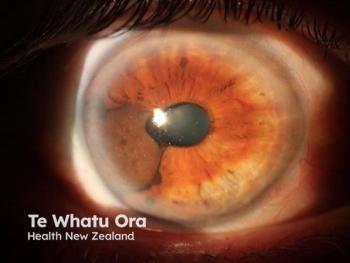
Italian Clinicians Share Cost-Effectiveness of Baricitinib Versus Dupilumab
The review found that utilizing dupilumab to treat these patients with AD cost more than using baricitinib, although dupilumab was more effective.
Italian clinicians recently assessed the cost-effectiveness of baricitinib (Olumiant) versus dupilumab (Dupixent) to treat adults with moderate to severe atopic dermatitis (AD). The health records evaluated consisted of patients who are eligible for the treatments and have not had successful treatment with ciclosporin. The review found that utilizing dupilumab to treat these patients with AD cost more than using baricitinib, although dupilumab was more effective.
Investigators used the perspective of the Italian healthcare payer and direct medical costs associated with each treatment option and estimated the cost of care over a lifetime. “A Markov cohort model utilized the proportions of patients with ≥75% improvement Eczema Area and Severity Index obtained from clinical trials. Health outcomes were evaluated in quality-adjusted life years (QALYs) to assess the cost effectiveness of baricitinib against a willingness-to-pay threshold of €35,000 ($37,409 US dollars) per QALY gained,” Johansson, Giovannitti, Mezzetti, Lu, and Sabatino explained.
The study found that patients treated with dupilumab or baricitinib, in combination with topical corticosteroids, ended up with total costs of €135,780 ($145,124 US dollars) or €129,586 ($138503 US dollars) and total QALYs of 18.17 or 18.13. Research showed that, “The incremental cost-effectiveness ratio of dupilumab versus baricitinib was estimated at €160,905 ($171,977 US dollars)/QALY.”
Investigators acknowledged 4 limitations to the study:
- There was uncertainty because core assumptions were needed to extrapolate available short-term clinical trial data to lifelong data.
- Benefits of baricitinib observed in clinical trials and not assessed in dupilumab clinical trials were not included.
- Discontinuation rates for each treatment were derived from different sources, adding potential for bias.
- Results may not be generalizable to other populations.
“We found that using dupilumab to treat these patients with AD cost more than using baricitinib, although dupilumab was more effective. Combining these considerations showed that the cost of obtaining the additional benefit from dupilumab over baricitinib was not cost-effective for the Italian healthcare system. Baricitinib may be a better treatment option because it is given orally, has a favorable balance between the risks and benefits of treatment, and costs less than dupilumab,” researchers concluded.
Reference
1. Johansson E, Giovannitti M, Mezzetti M, Lu N, Sabatino S. Cost-effectiveness analysis of baricitinib versus dupilumab for moderate to severe atopic dermatitis: an Italian healthcare system perspective [published online ahead of print, 2023 Sep 7]. J Med Econ. 2023;1-23. doi:10.1080/13696998.2023.2255495
Newsletter
Like what you’re reading? Subscribe to Dermatology Times for weekly updates on therapies, innovations, and real-world practice tips.


















